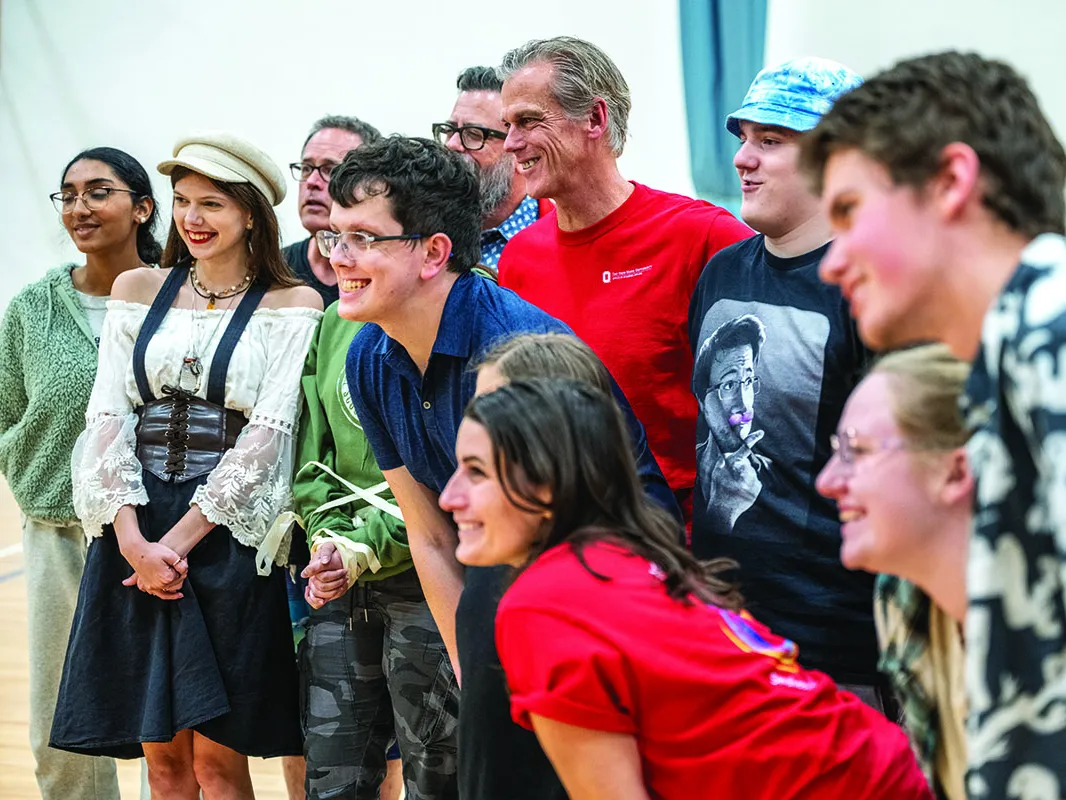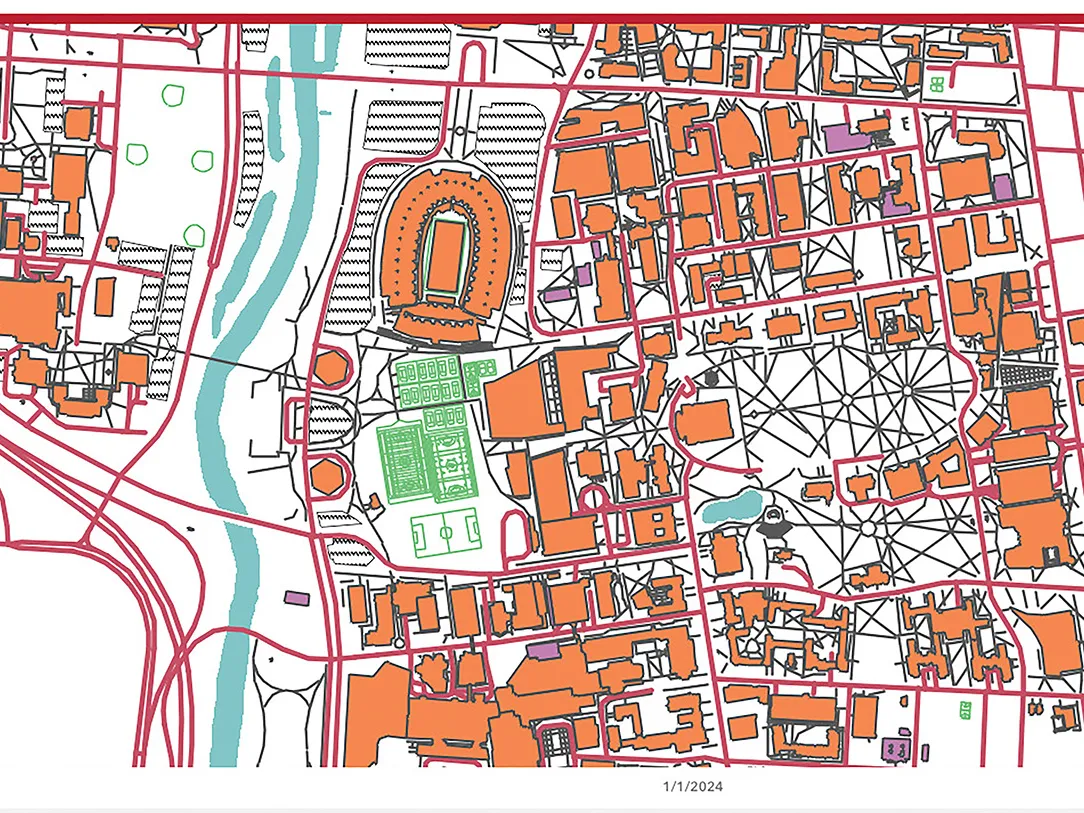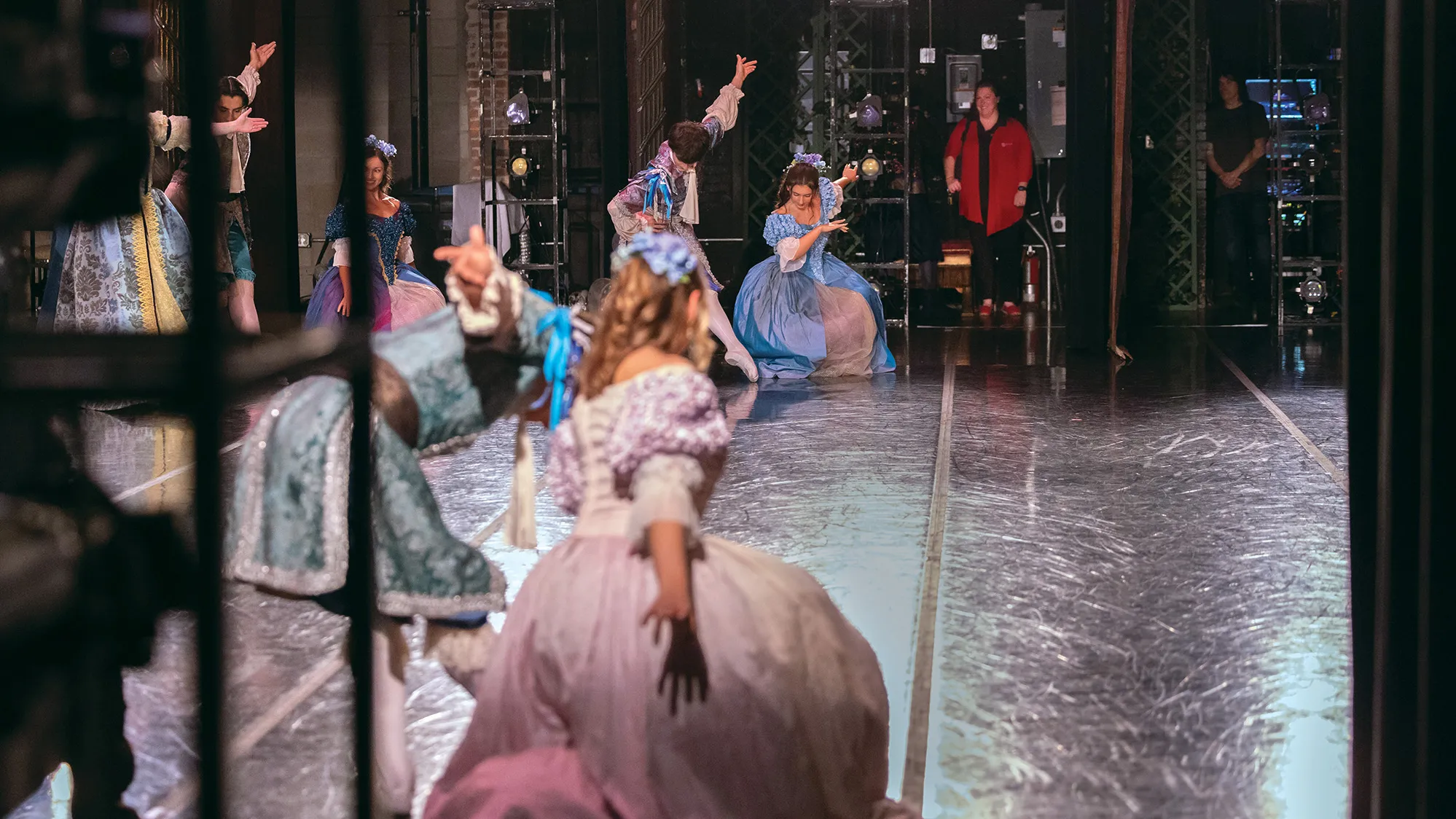
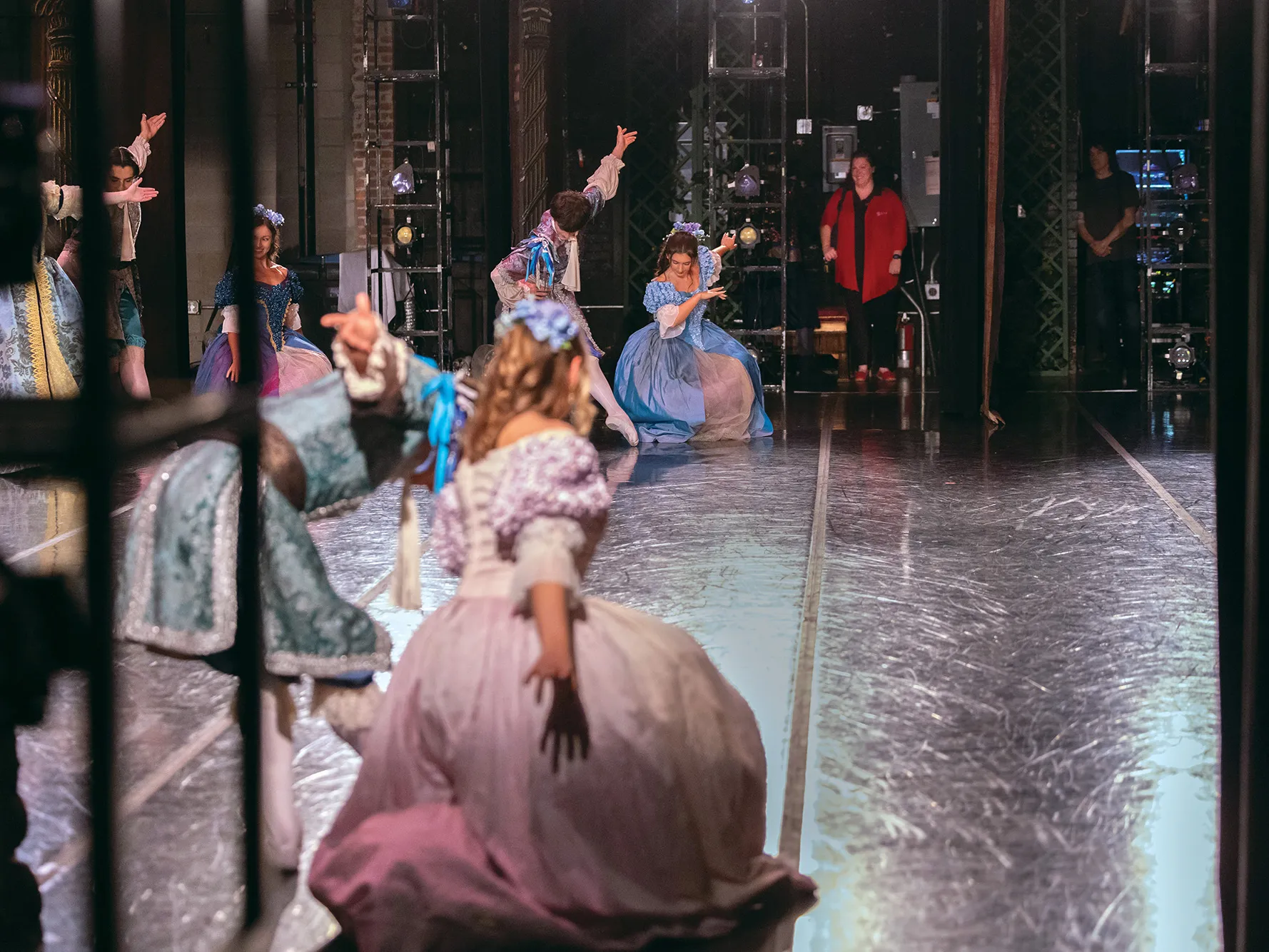
The art of healing is flourishing at Ohio State
Sports Medicine Outreach athletic trainers provide care and advice to help dancers keep stepping and musicians keep playing.
For her job at Ohio State, Hope Davis-Coen spends a lot of time watching ballet dancers and musicians work to perfect their art. “It’s a dream job,” says the athletic trainer, a one-time dancer who gave it up when a back injury left her bedridden for six months. She helps others avoid that fate as performing arts leader of Wexner Medical Center’s Sports Medicine Outreach. Her team connects performers with physicians, surgeons, trainers and other specialists.
In addition to running the team since 2012, Davis-Coen serves as the head athletic trainer for BalletMet, a Columbus professional ballet company. “Athletic training gets me right with the dancers while they’re dancing and not after they’re hurt,” she says. “And if they do get hurt, I know what to do to help them get past that part of it, too.”
Dance injuries tend to develop from repetition, she says. While injuries in college sports can be acute and impact-related, dancers more often deal with chronic pain.
“My colleague and I go to the studios and watch rehearsals. We see what’s coming next,” she says. “If we’re seeing a motion a lot, we consider, how can we negate that? Is that foam-rolling, teaching the dancers how to do self-release? Is that teaching them exercises to account for a weakness? We give them little tidbits to work on.”

Beñat Andueza Molina, who has danced with BalletMet for three years, appreciates that approach. “They are not trying to stop us from dancing but are helping us to dance,” he says. “[I feel] confident telling them that something is hurting … so we come up with a solution rather than a full stop.”
The team provides a similar approach at Ohio State’s School of Music. They started working together after a music professor performed with BalletMet, Davis-Coen says. “The performing arts world is a small world, and the relationships and connections you make can open all kinds of doors.”
Since 2016, the team makes regular wellness clinics available to musicians. Currently, they run every other Wednesday. Like dancers, musicians tend to suffer from chronic injuries related to repetition. Many have become used to their discomfort.
“I’ve worked with vocalists who had no idea they could sing with ease and without pain,” Davis-Coen says. “We provide a lot of education on appropriate warm-up and cool-down techniques, plus posture corrections. And we emphasize taking breaks, especially when practicing.”
Aesthetics present a unique challenge to caregivers when working with performing artists. A dancer, for instance, may reject wearing a brace or keep athletic tape to a minimum for visual reasons. “It’s not like what you see on football fields,” Davis-Coen says.
What she hopes more than anything is to change the culture around injuries, and that starts with her patients.
“Injuries [used to mean] you either sat out or hid it,” she says. “Those are two things you just don’t do anymore. I don’t want you to hide an injury because it’s just going to get worse. … I learned that firsthand. I realized that’s what I wanted to give back to the dance community, because I didn’t want anyone else to go through that.”
Jessica Brown, a 20-year BalletMet veteran, has taken the message to heart. “My experience with the trainers has highlighted the importance of advocating for my own health and well-being,” she says. “They truly understand the demands placed on dancers and offer support that addresses both physical and mental concerns.”
Given her personal history, Davis-Coen makes a point to build trust with the artists she works with and teach them how to advocate for themselves and navigate a medical system that can be overwhelming.
She takes pride in another thing, too: “Putting that Ohio State badge on, having that logo on your back,” she says. “We get to be ambassadors for what the university provides to the community.”
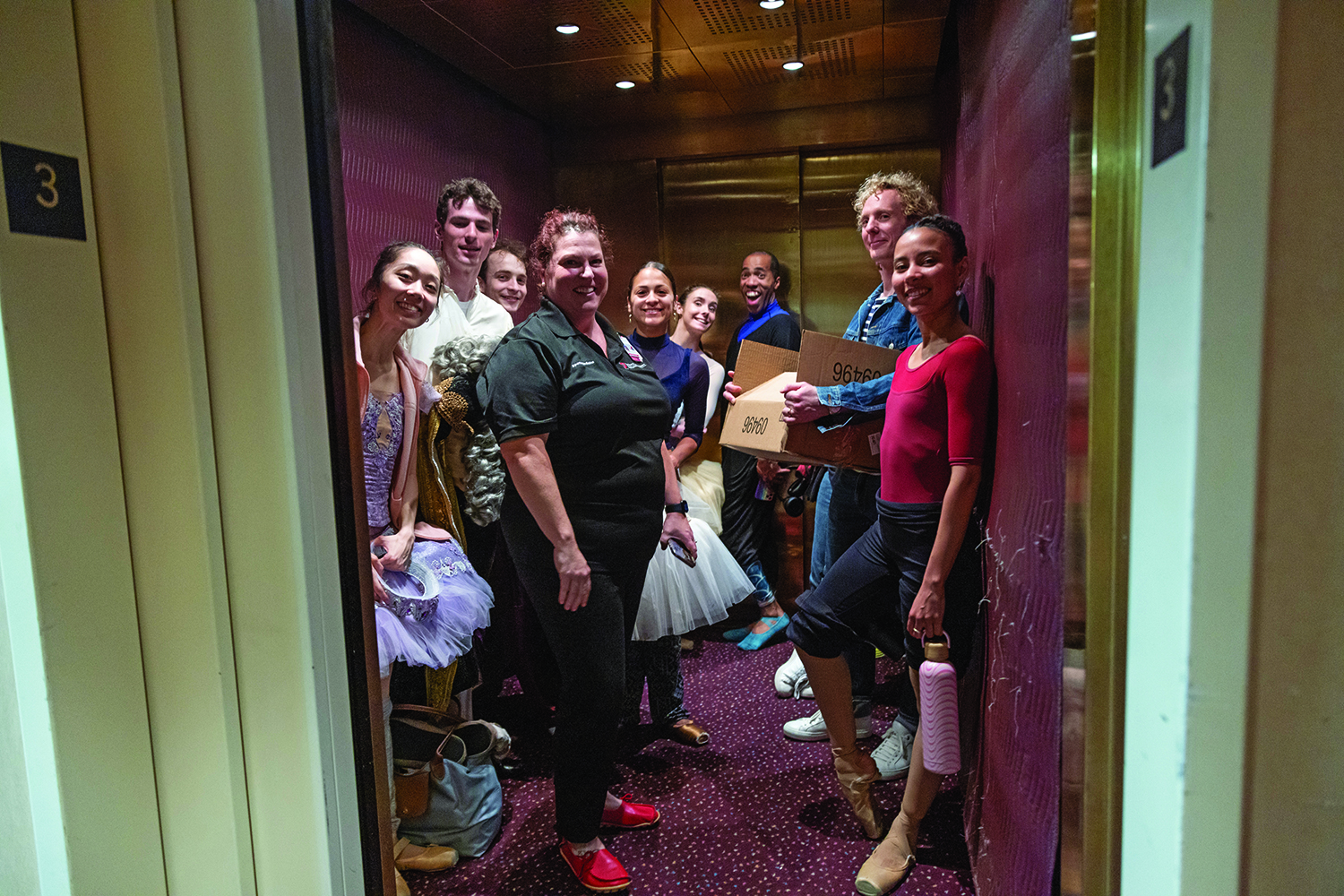
The new recruit: ROTC
Sports Medicine Outreach has recently expanded its care-giving portfolio to add the university’s Reserve Officer Training Corps (ROTC) programs. “ROTC students are just as active as student-athletes,” says athletic trainer Sam Wagner ’15, who splits time between the officer training program and BalletMet. “They do fitness tests, physical training. We often see students who don’t have much of a strength background. That’s where a lot of chronic injuries come from—doing too much, too fast.”
Wagner sees her role unfolding over two timelines, now and in the future. “Let’s say you roll your ankle,” she says. “One minor ankle sprain and you ignore it. Next thing you know, because of that imbalance, you tear your ACL. That can have more of an effect on your career, long term, than an ankle sprain. If you spend two weeks rehabbing the ankle injury, maybe you avoid surgery for something larger.”
Wagner says she considered a career in the Air Force when she was younger. While she ended up in a different field, she is happy to use her skills to help those who stayed on that path. “For me, it’s a way to give back to people who are serving and have served.”

